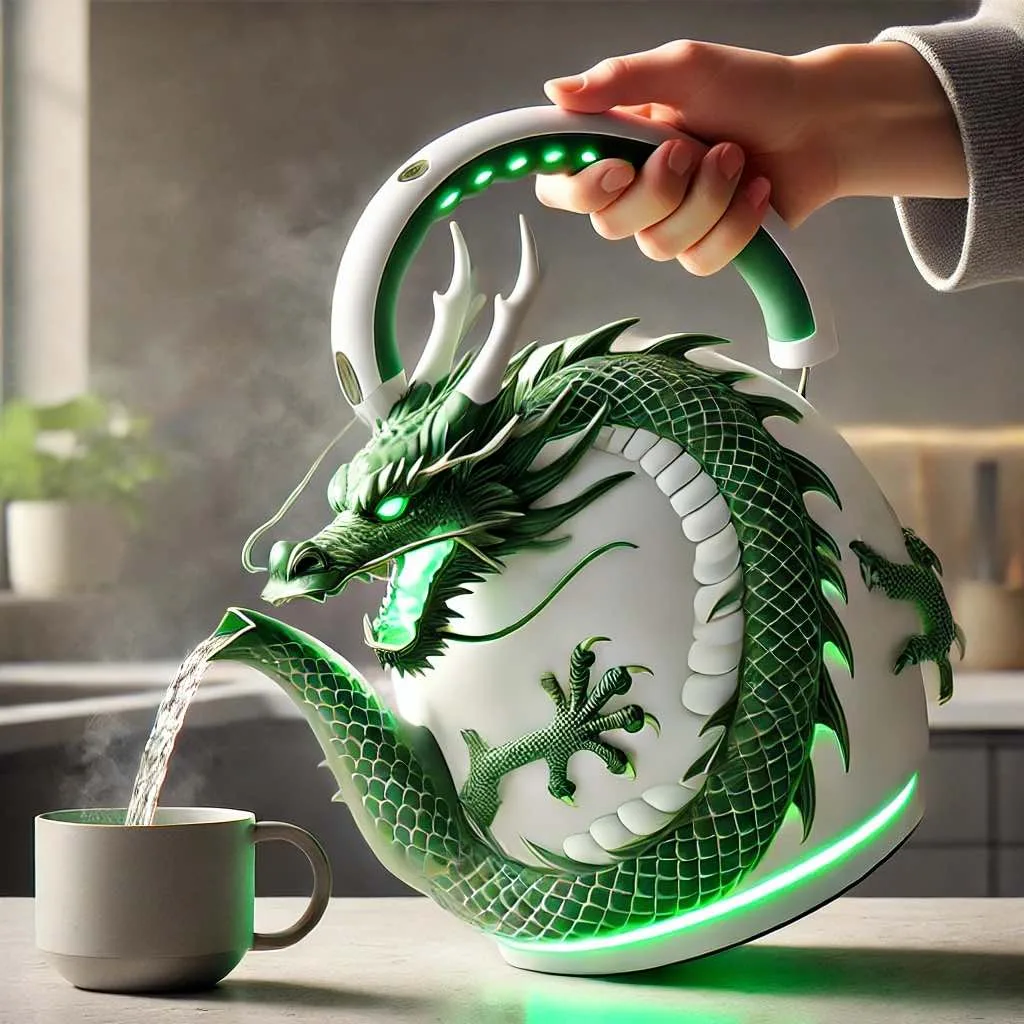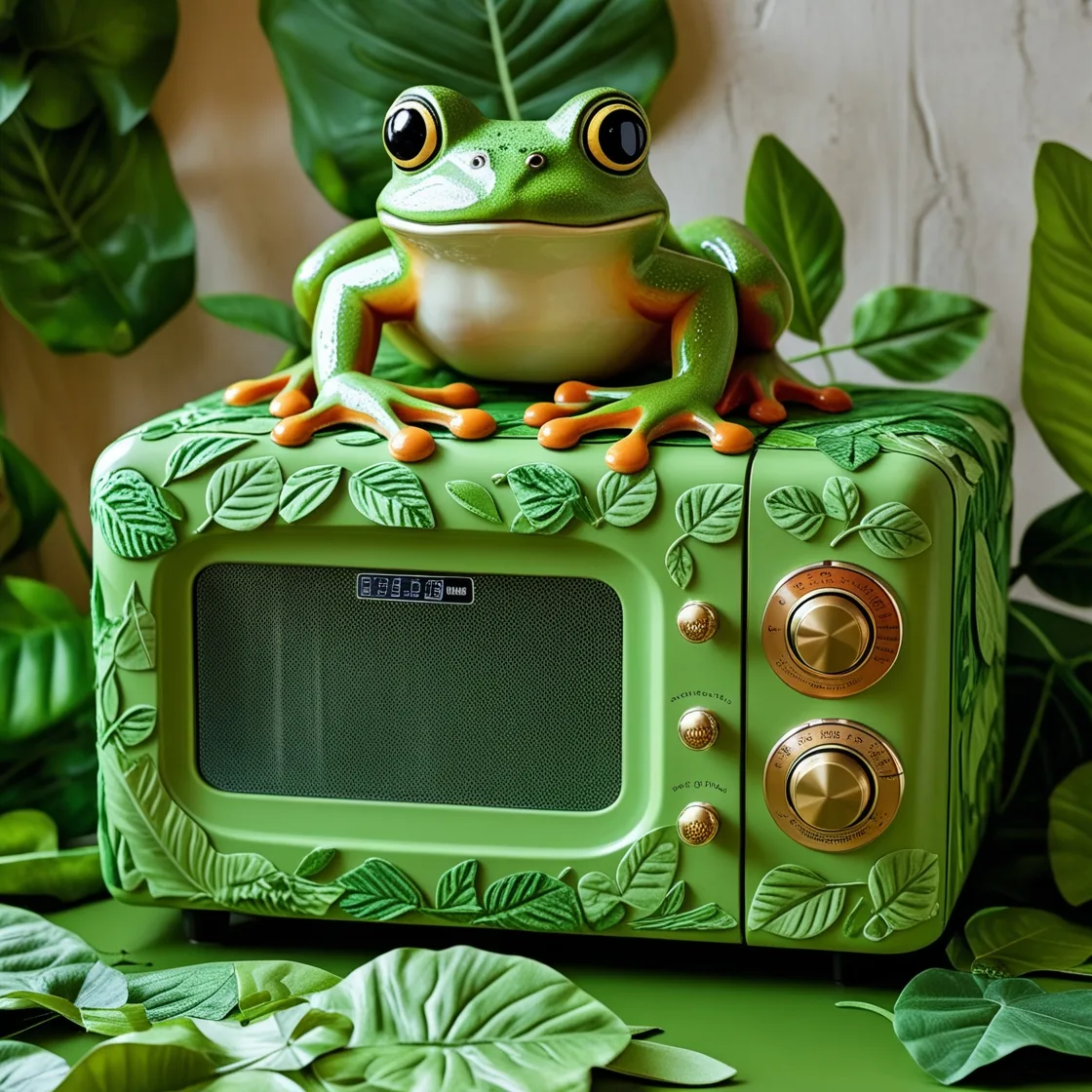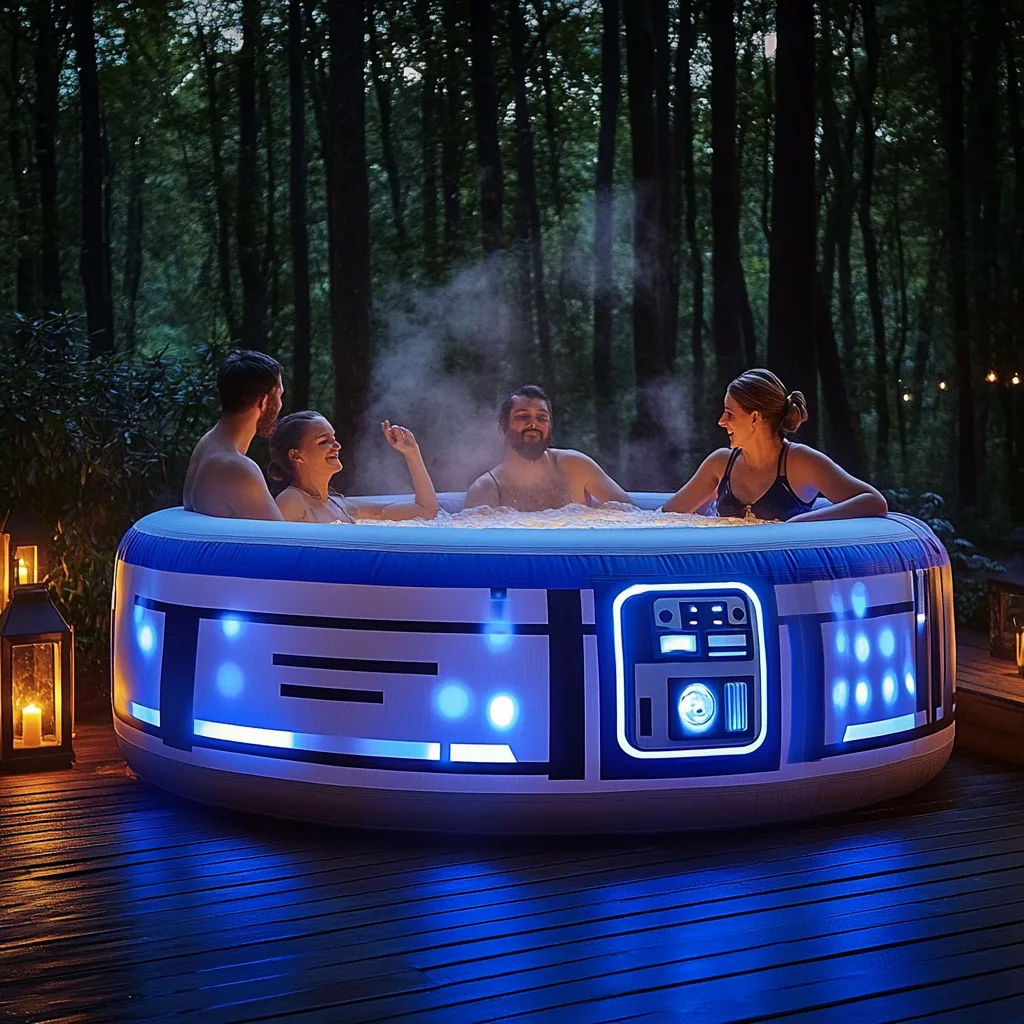In recent years, the concept of kitchen islands has evolved dramatically, combining functionality with aesthetic appeal. One of the most innovative ideas that have emerged in this realm is the jellyfish kitchen islands. This captivating design not only serves as a practical space for cooking and entertaining but also brings a touch of whimsy and creativity into the heart of your home. In this article, we will explore the essence of jellyfish kitchen islands, how to implement them in your home, their advantages and disadvantages, alternative options, a step-by-step guide to creating one, and valuable tips for making the most out of your jellyfish kitchen island.
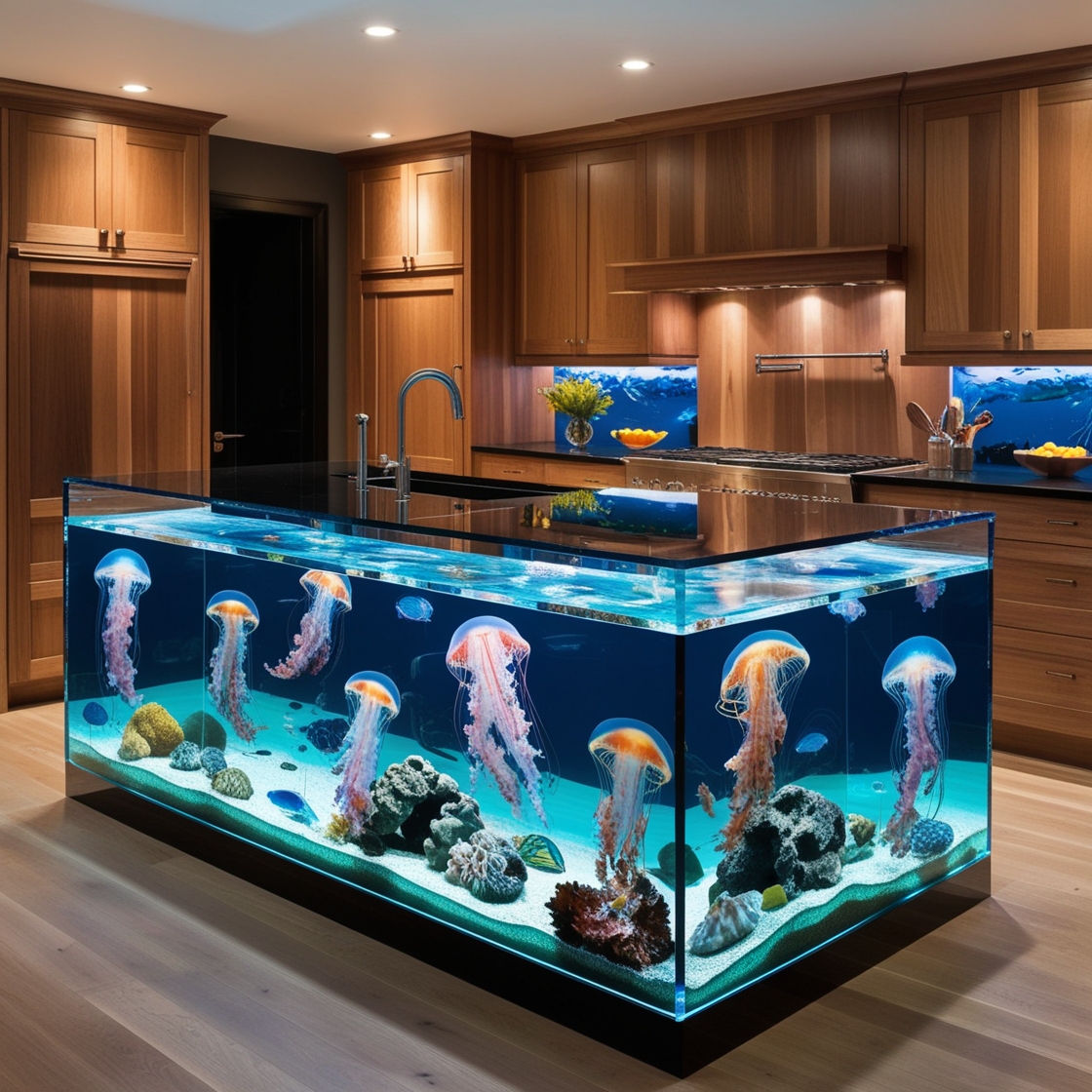
Who Jellyfish Kitchen Islands Appeal To
The allure of jellyfish kitchen islands transcends the traditional notion of kitchen design. These islands cater to a diverse audience whose tastes and preferences vary widely.
Homeowners with a Creative Flair
For homeowners who embrace creativity, a jellyfish kitchen island represents an opportunity to showcase personal style. The fluid shapes and vibrant colors that evoke the beauty of jellyfish can transform an ordinary kitchen into a unique masterpiece.
Such a design resonates with individuals who enjoy experimenting with their culinary skills, as it provides an inviting atmosphere to entertain guests or engage in family cooking sessions. Bringing together aesthetics and function, these islands allow homeowners to express their passion for art and food in a single space.
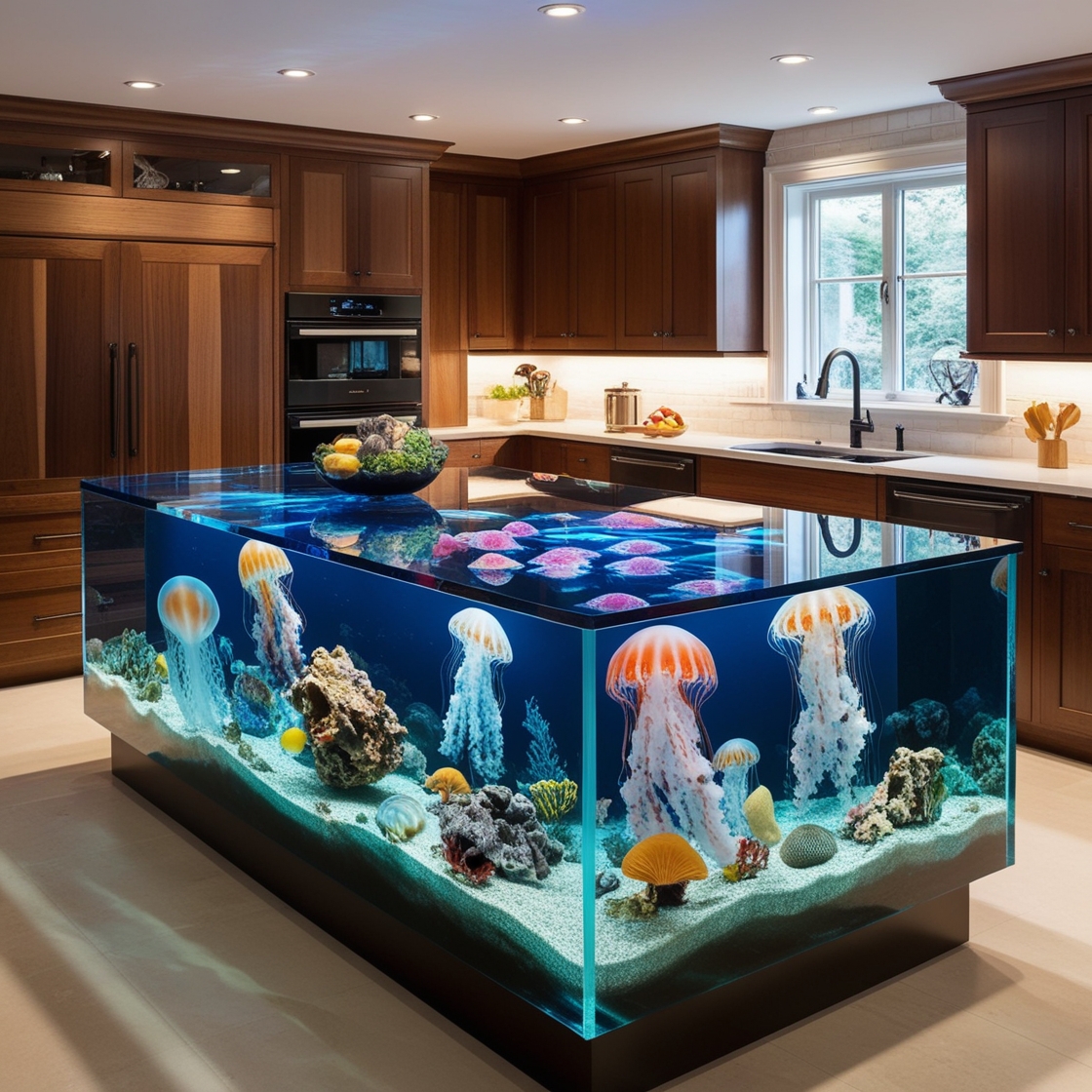
Eco-Conscious Individuals
As sustainability becomes a more significant concern, jellyfish kitchen islands align well with eco-conscious principles. Many of these islands are designed with environmentally friendly materials, helping to reduce the carbon footprint of your kitchen.
Using organic wood, recycled metals, and energy-efficient lighting, jellyfish kitchen islands can embody a commitment to sustainable living. Additionally, their unique designs typically encourage better airflow and natural light, which can contribute to a healthier indoor environment for all inhabitants.
Modern Minimalists
Even modern minimalists can find value in jellyfish kitchen islands. The subtle yet captivating forms can enhance simplicity while adding depth and intrigue to the overall aesthetic.
Clean lines combined with an eye-catching design can be a perfect marriage between minimalism and artistic expression. As minimalistic design often emphasizes functional space, jellyfish kitchen islands can provide ample storage and workspace without compromising the clean visual appeal expected in such environments.
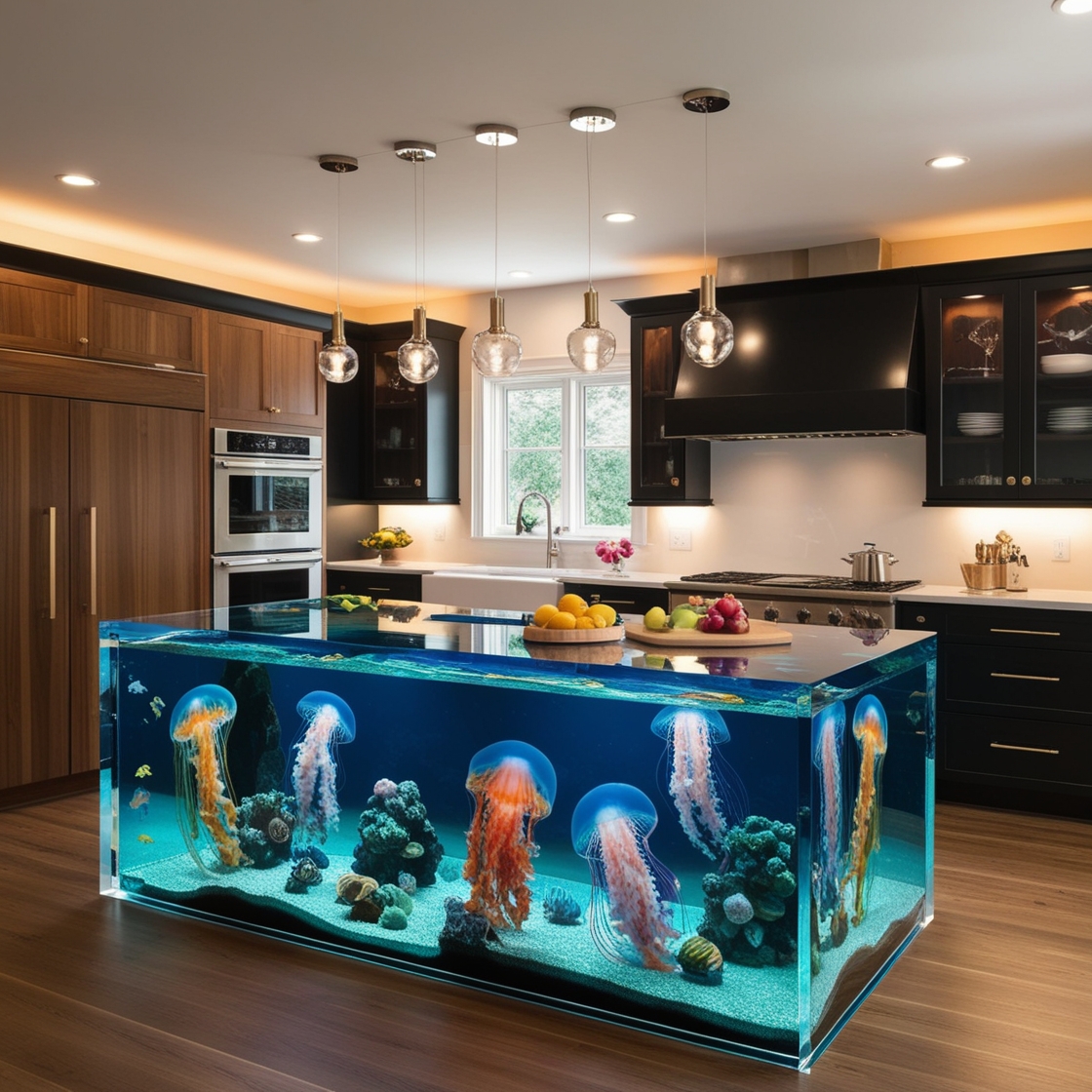
How to Incorporate Jellyfish Kitchen Islands into Your Space
Bringing a jellyfish kitchen island into your home requires thoughtful planning and consideration. Here are some key aspects to keep in mind as you embark on this creative journey.
Assessing Your Kitchen Layout
Before diving into the design process, it’s essential to assess your current kitchen layout. Consider the flow of movement within the kitchen, the location of appliances, and the overall usability of the space.
A thorough evaluation will help determine where a jellyfish kitchen island would best fit. If your kitchen has an open floor plan, you may want to position the island centrally to create a seamless connection between cooking and socializing. Alternatively, if you have a compact kitchen, consider a smaller jellyfish island that maximizes efficiency without overwhelming the space.
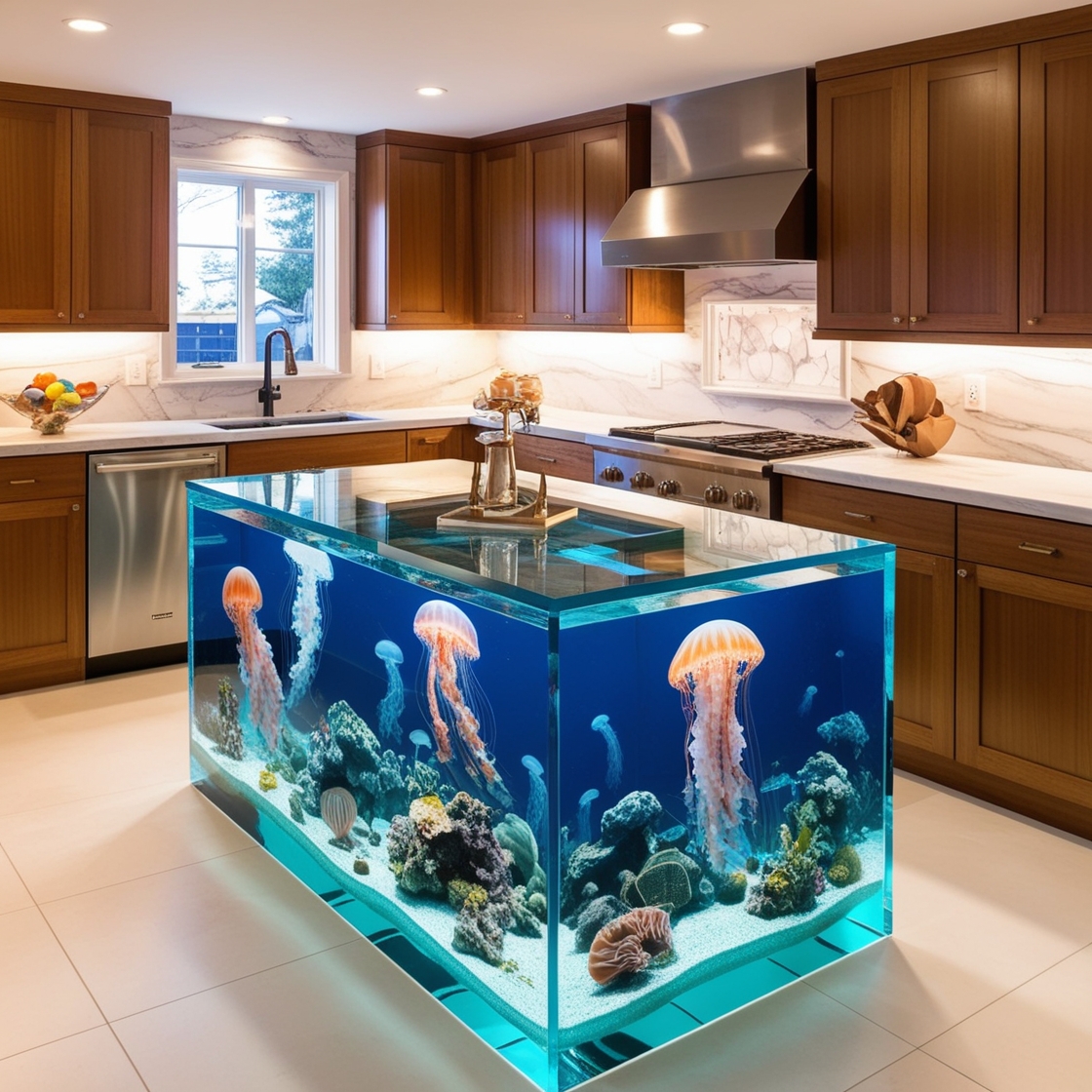
Choosing Materials and Finishes
Selecting the right materials and finishes is crucial in achieving the desired look and functionality of your jellyfish kitchen island. Depending on your personal preferences, you can opt for various materials, including wood, glass, or metal.
Wood offers warmth and texture, making it an excellent choice for a more rustic or traditional kitchen. Glass, on the other hand, can add elegance and sophistication, while metals like stainless steel provide a contemporary feel.
Finishes also play a significant role in the overall aesthetic. For instance, incorporating high-gloss finishes can create a striking contrast against matte surfaces in your kitchen.
Designing the Shape and Size
The design of your jellyfish kitchen island should reflect both your individual taste and the constraints of your kitchen layout. The organic shapes reminiscent of jellyfish can inspire flowing curves or dynamic forms that draw attention.
Avoid harsh angles and rigid structures, opting instead for rounded edges and asymmetrical designs that embody the essence of jellyfish. When considering size, ensure that it complements the existing features of your kitchen without overpowering them. Striking the right balance will create a harmonious and inviting space where everyone feels at ease.
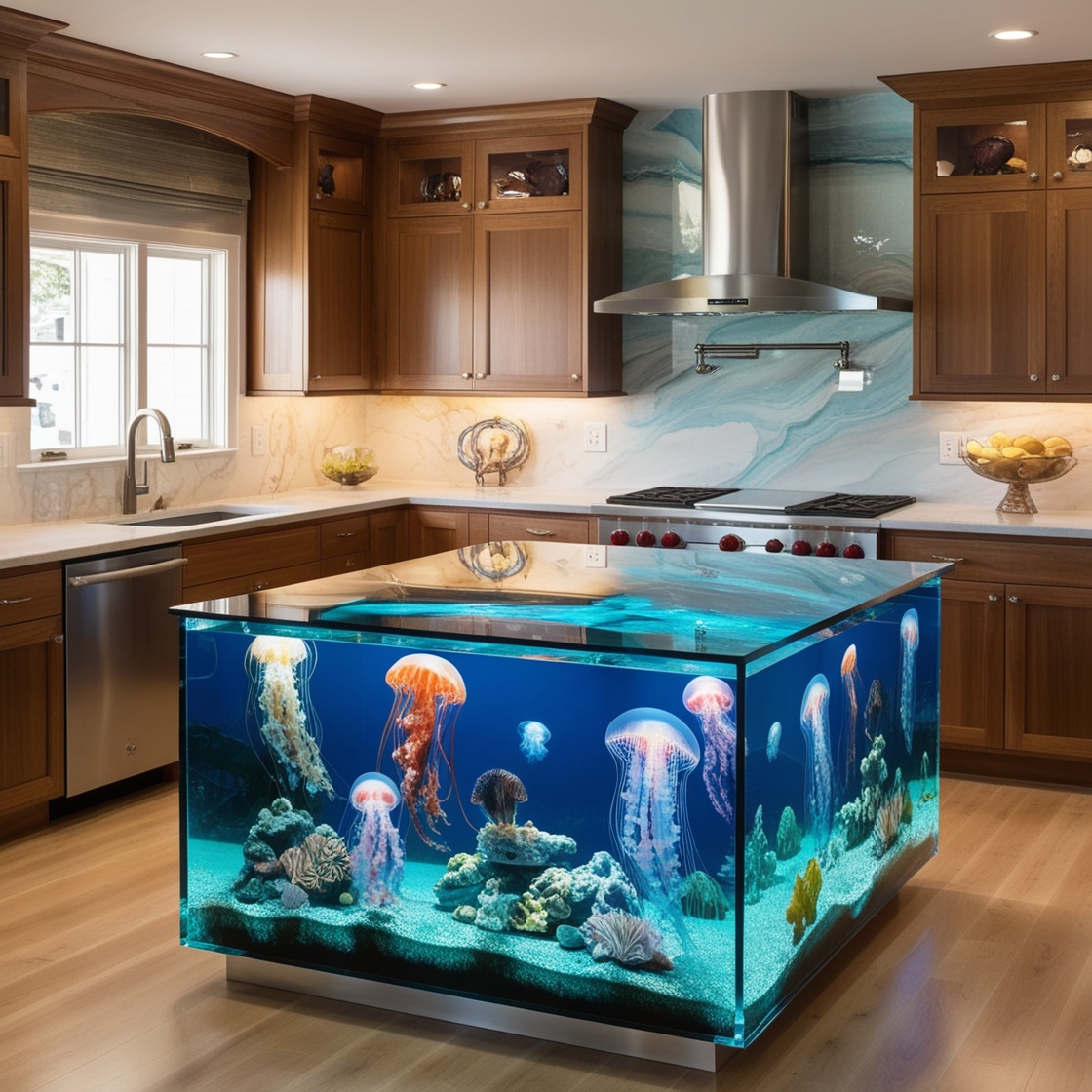
Pros and Cons of Jellyfish Kitchen Islands
Every design choice comes with its advantages and drawbacks, and jellyfish kitchen islands are no exception. Understanding the pros and cons can help you make an informed decision about whether this unique feature is right for your home.
Advantages of Jellyfish Kitchen Islands
One of the most notable advantages of jellyfish kitchen islands is their ability to serve multiple functions. These islands can act as cooking stations, prep areas, serving spots, or even casual dining spaces.
Another benefit lies in their aesthetic appeal. The fluid shapes and vibrant colors associated with jellyfish can inject personality and life into your kitchen, elevating it from mundane to extraordinary.
Jellyfish kitchen islands can also promote social interaction. They often become focal points for gatherings, encouraging conversations and creating memorable experiences during family meals or entertaining friends.

Disadvantages of Jellyfish Kitchen Islands
On the flip side, jellyfish kitchen islands might not suit every kitchen design. Their organic shapes could clash with more structured or traditional decor, leading to a disjointed aesthetic.
Maintenance can also pose a challenge. Depending on the materials used, certain jellyfish islands may require more upkeep than standard kitchen islands. For instance, wooden surfaces may need regular sealing and treatment to prevent damage from moisture.
Lastly, cost can be a significant factor. Custom-designed jellyfish kitchen islands can come with hefty price tags, and homeowners must weigh their desire for uniqueness against their budgetary constraints.
Alternatives to Jellyfish Kitchen Islands
While jellyfish kitchen islands can be captivating additions, some homeowners may prefer alternatives that still offer flexibility and style. Exploring these options can open up new possibilities for your kitchen design.
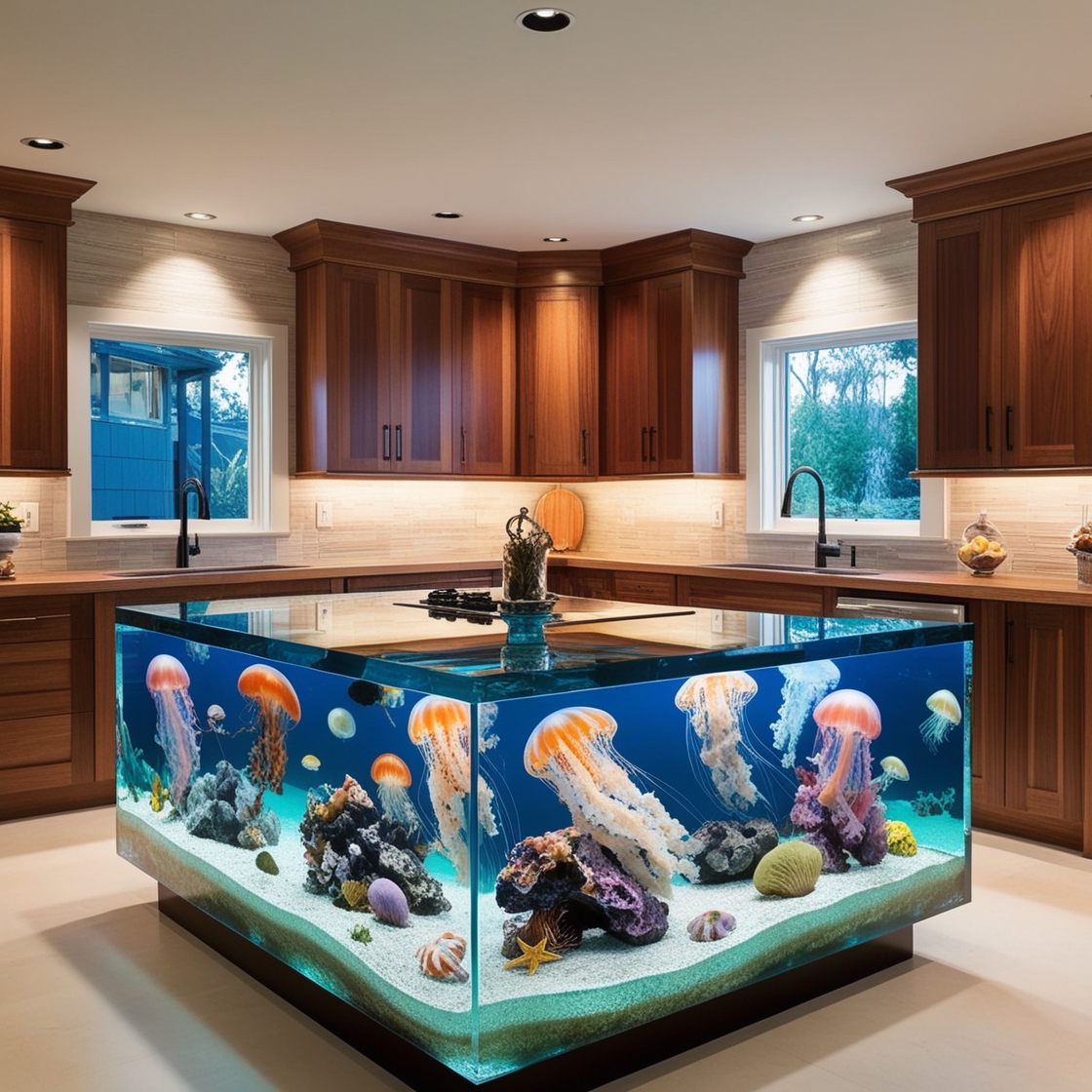
Traditional Kitchen Islands
Traditional kitchen islands focus on functionality and straightforward designs. They typically feature rectangular or square shapes with ample storage and countertop space.
These islands can be customized with cabinetry, providing an organized space for your kitchen essentials. Though they may lack the whimsical appeal of jellyfish islands, traditional designs remain timeless and versatile.
Modular Kitchen Islands
Modular kitchen islands offer a flexible solution for those who want the benefits of an island without committing to a permanent fixture. These islands consist of movable components that can be rearranged based on your needs.
With modular designs, you can create a customized space that adapts to different cooking situations, gatherings, or even daily routines. Whether you need additional prep space or a small dining area, modular islands can provide the freedom to create as needed.
Floating Kitchen Islands
Floating kitchen islands are an innovative approach that creates a sense of openness in the kitchen. These islands are wall-mounted, freeing up valuable floor space while maintaining functionality.
They often feature sleek designs and clean lines, making them suitable for minimalist or contemporary kitchens. While floating islands may not capture the same playful essence as jellyfish islands, they prove to be practical alternatives that maximize space without sacrificing style.

Step-by-Step Guide to Creating Your Own Jellyfish Kitchen Island
Creating a jellyfish kitchen island involves several steps, from conceptualization to execution. Here’s a comprehensive guide to help you bring your vision to life.
Brainstorming Ideas
Start by brainstorming ideas for your jellyfish kitchen island. Gather inspiration from various sources, such as design magazines, Pinterest boards, or Instagram accounts dedicated to interior design.
Consider the colors, shapes, and materials that resonate with you and fit within your kitchen’s existing aesthetic. Create a mood board to visualize your ideas and bring clarity to the design process.
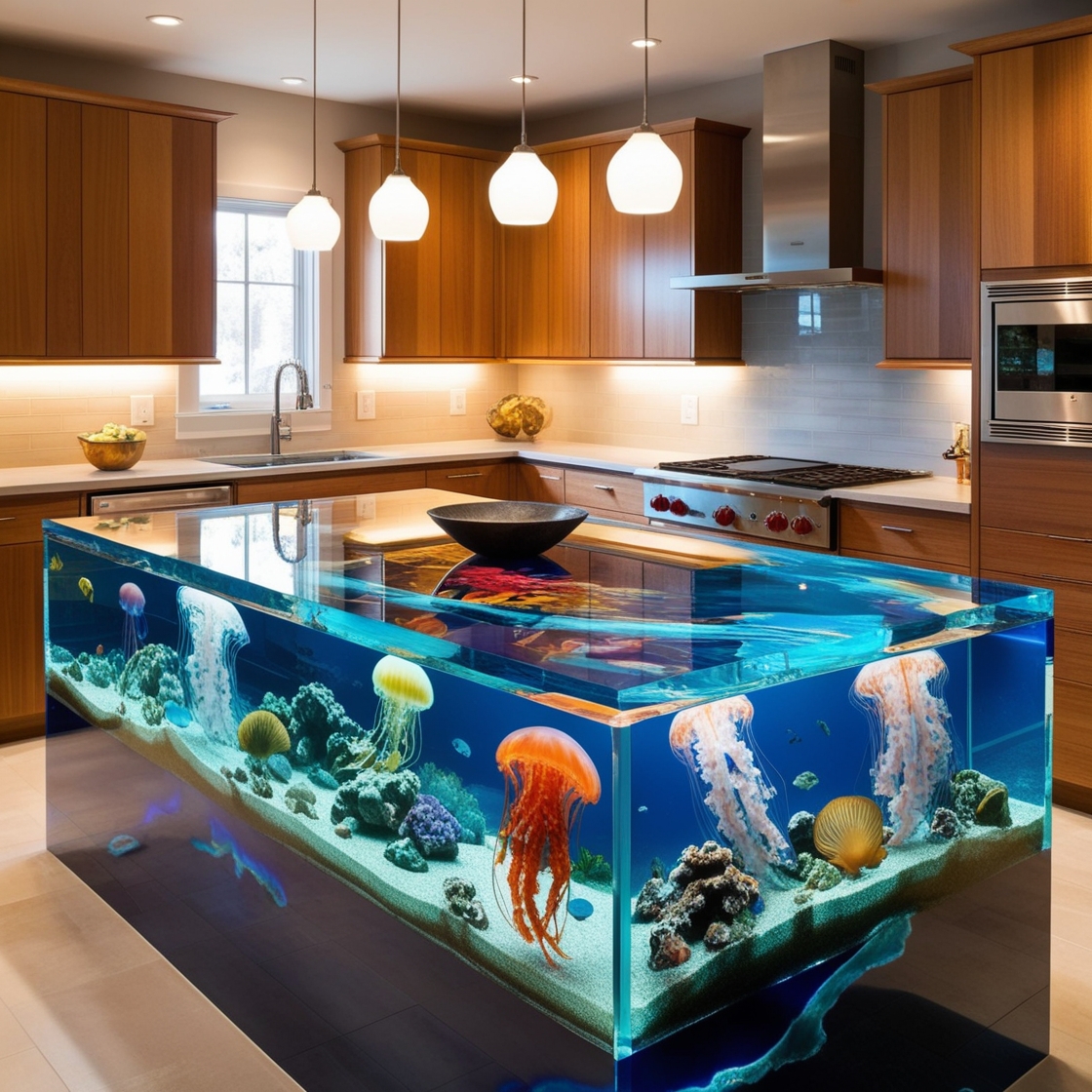
Planning and Measurement
Once you have a clear idea of what you want, begin measuring your kitchen space. Accurate measurements will help ensure that your jellyfish kitchen island fits seamlessly into your environment.
Take note of any obstructions, such as doors, windows, or appliances, that could impact the placement of your island. Planning ahead will save you time and frustration in the long run.
Engaging a Designer
If you’re unsure about how to execute your vision, consider engaging a professional designer. An experienced designer can help refine your ideas and create a cohesive plan tailored to your specific needs.
From selecting materials to ensuring structural integrity, working with a designer can elevate the quality of your jellyfish kitchen island while alleviating the stress of DIY projects.
Construction and Installation
Once you have a finalized plan, the actual construction and installation process can begin. Depending on your skill level and available tools, you may choose to hire contractors or take on the project yourself.
Ensure that safety guidelines and building codes are followed throughout the process. Pay attention to details such as electrical installations if your island incorporates lighting or power outlets.
After construction, take the time to finish your jellyfish kitchen island properly. Sanding, painting, or staining can ensure a polished final result that enhances the beauty of the unique design.
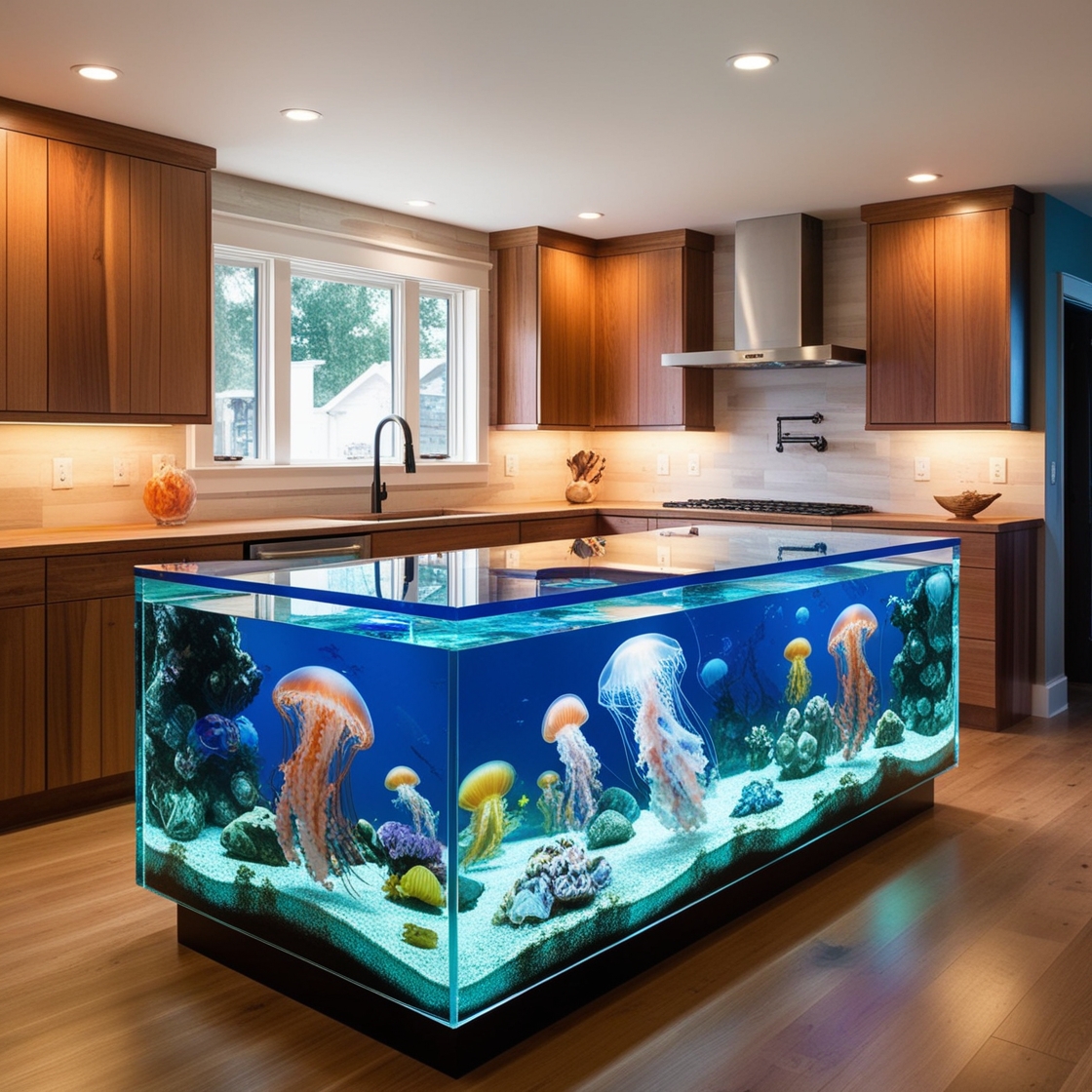
Tips for Making the Most Out of Your Jellyfish Kitchen Island
To truly maximize the potential of your jellyfish kitchen island, consider these helpful tips for creating a functional and inviting space.
Optimize Storage Solutions
Incorporating clever storage solutions can significantly enhance the usability of your jellyfish kitchen island. Consider installing drawers or cabinets that blend seamlessly into the design.
Utilizing vertical space for shelving can also help keep your kitchen organized and clutter-free. Whether storing cookbooks, utensils, or pantry items, optimizing storage will increase your island’s efficiency.
Add Functional Accessories
Adding functional accessories can elevate the versatility of your jellyfish kitchen island. From built-in cutting boards to integrated sinks, these enhancements can make meal prep more enjoyable.
You might also consider installing bar stools or seating options around the island to encourage casual dining and social interaction while cooking. Creating a multi-functional space will ensure your kitchen island remains a hub of activity.

Incorporate Personal Touches
Lastly, don’t forget to incorporate personal touches that reflect your style and personality. Adding decorative elements, such as artwork, plants, or unique tableware, can enhance the overall ambiance of your kitchen.
Whether it’s showcasing your favorite cookbooks or displaying seasonal flowers, these small details can make your jellyfish kitchen island feel like a true extension of your home.
FAQs
What materials are best for jellyfish kitchen islands?
Jellyfish kitchen islands can be crafted from various materials, including wood, glass, and metal. Selecting eco-friendly options and high-quality finishes enhances both aesthetics and durability.
How do I maintain my jellyfish kitchen island?
Maintenance varies depending on materials used. Wooden surfaces may require regular sealing and treatment, while glass and metal can be easily cleaned with mild detergents and soft cloths.
Can I customize the shape of my jellyfish kitchen island?
Absolutely! The beauty of jellyfish kitchen islands lies in their organic forms, allowing for customization. Collaborating with a designer can help you achieve the perfect shape that aligns with your vision.
Are jellyfish kitchen islands suitable for small kitchens?
Yes, jellyfish kitchen islands can be scaled down to fit smaller kitchens. Opting for compact designs will ensure the island remains functional without overwhelming the space.
How can I add lighting to my jellyfish kitchen island?
Lighting can be incorporated in various ways, such as pendant lights hanging above the island or built-in LED strips along the edges. Selecting the right lighting can enhance the ambiance and functionality of your kitchen space.
Conclusion
In conclusion, jellyfish kitchen islands represent a beautiful fusion of artistry and practicality in modern kitchen design. By understanding who benefits from these islands, how to incorporate them, their pros and cons, and exploring alternatives, you can make an informed decision about adding this unique feature to your home. Additionally, following a structured approach to creation and utilizing practical tips can help you create a space that is both functional and visually stunning. Embracing the beauty of jellyfish kitchen islands can transform your culinary experience and turn the heart of your home into a captivating and delightful space.



